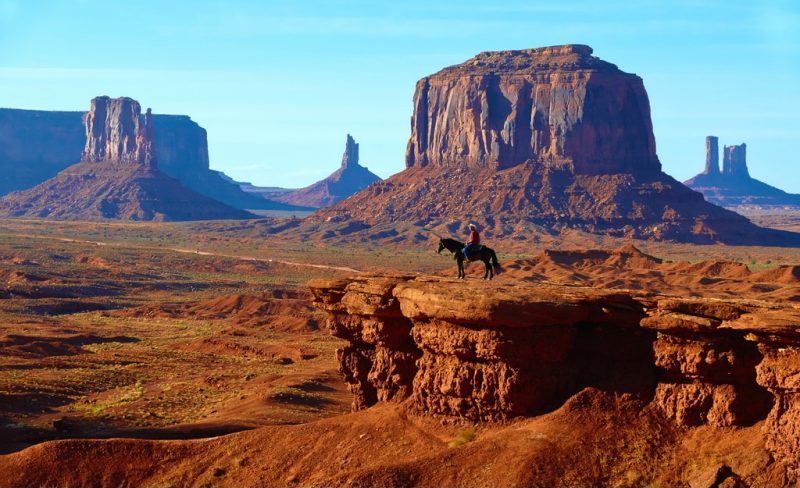A Valley It is a plain that is located between mountains or high areas and usually has a river course. For example: the Valley of Death in the United States or the Loire Valley in France.
The valleys are one of the Geographical accidents most common, so there are numerous valleys around the world. Most are the product of erosion caused by water and wind on the ground, others were formed by the movement and clash of tectonic plates.
type of valleys
Depending on their topography, valleys can be:
- narrow valleys. They are narrow valleys, which are usually V-shaped and crossed by a relatively deep river, close to the mountains that surround it, with currents that erode the soil. They are usually young reliefs, frequently observable in the middle or upper parts of the mountain. Narrow valleys are unattractive for urban purposes (because of their narrowness), but they are valleys with great visual appeal.
- wide valleys. They are valleys with wide plains, in which the riverbed is much more extensive than in the narrow valleys and with an ancient geological formation (periods of the primary or secondary era). Floods frequently occur in these valleys, not only because of the plain that characterizes them but also because of the flow of the river that crosses them.
examples of valleys

Some of the most recognized valleys in the world are:
- Monument Valley. It is located within the Colorado Plateau, on the border between the states of Utah and Arizona (United States) and is characterized by its red soil and its stone structures and monuments.
- Great Rift Valley. It extends across the African and Asian continents and is a great geological fault, product of the separation of the tectonic plates, which is characterized by its volcanoes and a large crack in constant growth.
- Porsmork Valley. It is located in the south of Iceland, between glaciers and is also called the “Thor” valley, in honor of the god of thunder. It is recognized for its landscape and its volcanoes.
- Loire Valley. It is located in the center of France and is characterized by its wineries, monuments and architectural works (including castles). It was recognized by UNESCO as a World Heritage Site.
- King’s Valley. It is located in Egypt, in the Luxor necropolis and was declared a World Heritage Site by UNESCO due to the appearance of tombs of Egyptian pharaohs.
- death Valley. It is located in the United States, within the state of California. It is a valley formed by a large desert that has the lowest depression on the continent and is one of the hottest places on the planet.
- Douro Valley. It is located in Portugal and is characterized by the surrounding landscape, which makes it a tourist attraction. On the banks of the Duero River, the cultivation of Port wine originates, which is why the Alto Duero area was declared a World Heritage Site by UNESCO.
- Danum Valley. It is located in Malaysia and is a jungle area that has a great variety of flora and fauna.
- yosemite valley. It is located in the United States, in the state of California, within the Yosemite National Park, which was declared a World Heritage Site by UNESCO. This valley stands out for its snowy peaks and its great biodiversity, which makes it a site of tourist interest.
- sacred Valley. It is located in Peru in the Andes mountain range and contains numerous monuments, colonial towns and architectural remains of the Inca culture that inhabited that area.
Other examples of valleys are:
- Cabuérniga Valley (Spain)
- Aburrá Valley – Inter-Andean Valley (Colombia)
- Acari Valley (Peru)
- Aust-Agder Valley (Norway)
- Chicama Valley (Peru)
- Jequetepeque Valley (Peru)
- Lambayeque Valley (Peru)
- Piura Valley (Peru)
- Sibundoy Valley – Inter-Andean Valley (Colombia)
- Tumbes Valley (Peru)
- Waipi’o Valley (Hawaii)
- Catatumbo Valley – Inter-Andean Valley (Colombia)
- Cauca Valley (Colombia)
- Cesar Valley – Inter-Andean Valley (Colombia)
- Osmore Valley (Peru)
- Umbra Valley (Chile)
- High Valleys (Mexico)
- Calchaquí Valleys (Argentina)
- Valira Valleys (Catalonia)
- Valdenses Valleys (Italy)
